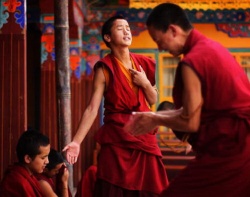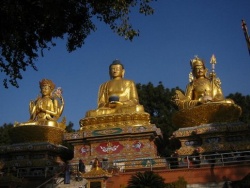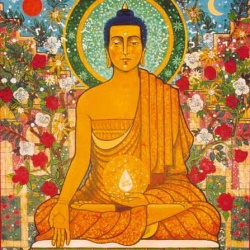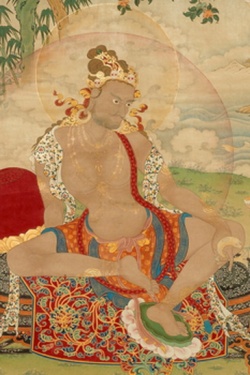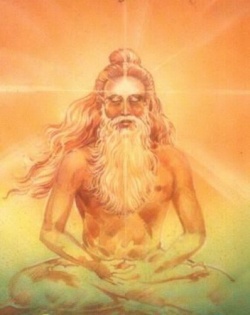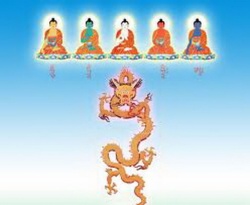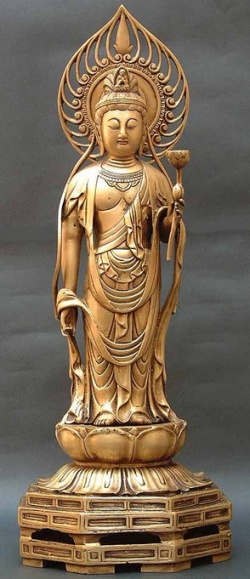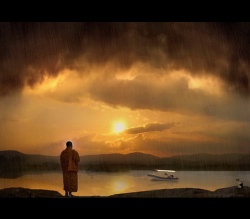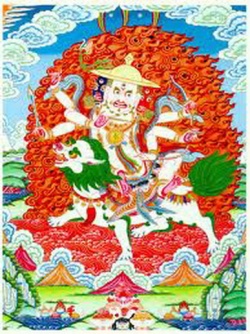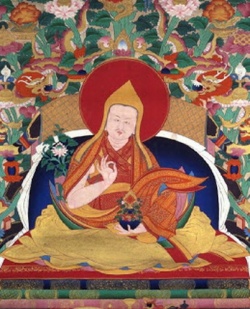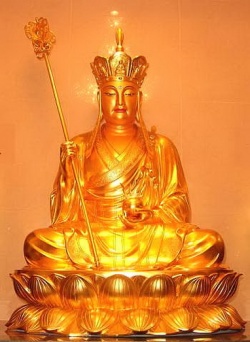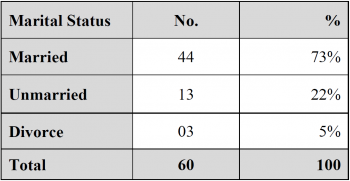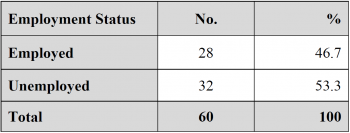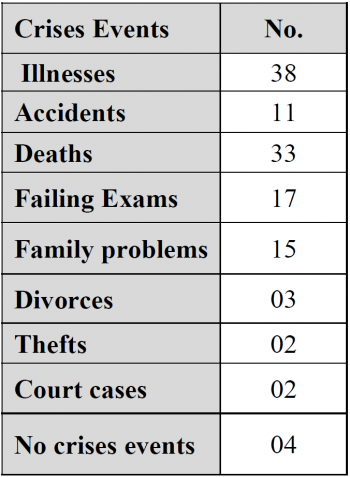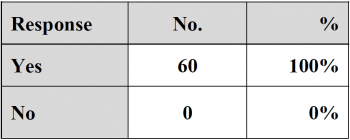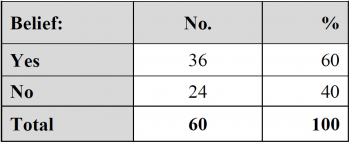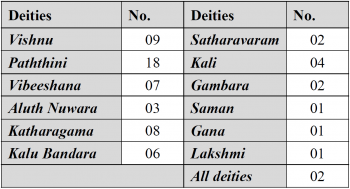An Anthropological Study on the Rituals: Pertaining to Life Crises Events among Sri Lankan Buddhists
An Anthropological Study on the Rituals
Pertaining to Life Crises Events among Sri Lankan Buddhists
Prof. Yasanjali Devika Jayatilleke
University of Sri Jayewardenepura, Sri Lanka
Introduction
Ritual is derived from the Latin term ‘ritus’ which means custom. There are two distinct trends of common usage for the words rite-ritual, ceremony- ceremonial and custom-customary[1]. A ritual is the meeting point of myth and metaphysic or reflective thought and religious living. It is the frontier between time and eternity; the known and the unknown. Rituals are necessary because they enable man to comprehend and to realize that which is the ultimate basis of life, to communicate with the powers that preside over the destinies of the universe to which she/he belongs. Man cannot afford to live in a state of giving up one’s beliefs or faiths, once the awareness of the unknown has downed on him. Rites and rituals possess an intellectual character when considered as ‘practices’ requiring the participation of all members of the community[2].
According to Kelly and Kaplan[3] study of ritual has to run to history and raise fundamental questions for Anthropology. The definition of ‘ritual’ has long been debated. Proposed delimiting features range from biological bases; to functional values; to linguistic, symbolic, or semiotic forms; to rejection of the category altogether; to rejection of all general categories, and insistence that the proper starting point is indigenous experience and category. Nevertheless, the definitions of ritual that have been offered have tended to share a presupposition about their object. In part many rituals are indigenously represented as ‘ancient’ and unchanging; rituals unlike riots, for example carry an albatross of connections to ‘traditions’, the scared - to structures that have generally been imagined in stasis. While riots are obviously events in history, scholars have had a great deal of difficulty conceiving of rituals as anything more concrete than types of events. Until recently the unique ritual event has been an anomaly, understood only when the function or transformation is discovered that identified its place in structure. It is the possibility that rituals are historical events that now intrigues many anthropologists.
In fact there are different views and approaches to the study of ritual. Some scholars study ritual as expressions of relations between historically specific selves in theories of identity and alternatives. Others study ritual within dynamic cultural systems and articulations in the colonial encounter. Still others focus on rituals of rule and resistance in studies of domination, which some following William’s and Gramsci, call ‘hegemony’[4]. Accordingly there are number of theories on ritual such as sociological, anthropological and psycho-analytic. This study examines the rituals pertaining to life crises events among Sri Lankan Buddhists.
Sri Lanka is predominantly a Buddhist country. More than seventy percent of the population in the country is Sinhalese - Buddhists. Buddhism was officially introduced to Sri Lanka during the third century B.C. by Maha Mahinda Thero from India, who was a religious emissary of the Emperor Ashoka. Subsequently, myths, rituals, religious observances and practices of the pre-Buddhist era as well as Hindu and other belief systems crept into Sri Lankan Buddhism and this religious admixture could be called as Sinhalese Buddhism.
The focus of this paper is the rites and rituals among Sri Lankan Buddhists which they perform during their illnesses, calamities and deaths etc. This study covers the anthropological and sociological perspectives of those rituals and the psychological adaptation to such events. Therefore a multi-disciplinary approach was employed to analyze the real sense of Sri Lankan Buddhist cosmology.
Methodology
The questionnaires, interview method and case studies were used as the tools of primary data collection. Accordingly sixty (60) questionnaires and five (5) interviews and case studies were employed. Simple random sample method has been used. The sample was consisted of respondents’ i.e.: disciples, Buddhist monks, shamans, soothsayer, astrologer, etc. Secondary data was collected through relevant literature. Out of all kind of rituals the present study was limited to the rituals pertaining to life crises events among Sri Lankan Buddhists.
The Sri Lankan Buddhist Rituals and Cosmology
The Sri Lankan culture has been nourished and shaped by Buddhism. Religious beliefs have brought in ritual practices to the civilizations. All these are performed in order to overcome the crises of life and to gain health and prosperity. In all these occasions astrology also played a major role as it is a strong component of the Sinhala tradition. Accordingly there is a deep-rooted cosmology behind the Sri Lankan Buddhists rituals.
In the first place the Sinhalese Buddhists are mainly concerned about the beliefs affecting melova (this world) and paralova (the other world) which center on the fundamental Buddhist notion of karumaya (the popular term for the Buddhist concept kamma). The individual is responsible for his karumaya which is carried over from his earlier lives into his present existence. The balance sheet of an individual’s good deeds (pin) and bad deeds (paw) determines his potential for attaining a better or worse state in this life and the life hereafter. Karumaya has two extremes, i.e:. vasanava (luck) and avasanava (bad luck). Even though human life is bound by karumaya, one can avoid its effect to a certain extent and achieve vasanava (luck, prosperity, health) by propitiating various supernatural categories of being, as a long term measure by performing meritorious deeds (pin) such as, performing religious rites and rituals, and living a virtuous life.
Life crises events such as illnesses, accidents, deaths, failures etc., are also viewed according to the notion of karumaya. Planetary gods (graha deviyas), demons (yakas) and malevolent spirits (pretas) cause misfortunes or illnesses and s/he may request a Buddhist monk to chant pirith (Buddhist verses) or recite benedictory verses (seth kavi) for the gods (devas), and at the same time he may go to a soothsayer or an astrologer and on the basis of his instructions propitiate the demons or malevolent spirits. This does not mean that he is confusing Buddhist rituals with non-Buddhist rituals. It simply means that misfortune may be interpreted as a consequence of karmaya, or as an affliction caused by spirits or as both working in conjunction.[5] To avert these kinds of misfortunes and crises, Sinhalese Buddhists perform various kinds of rites and rituals and they could be categorized into three main groups:
- Calendrical rituals (recurrent, cyclical);
- Life crises rituals (recurrent, non-cyclical);
- Life cycle rituals.
As mentioned earlier this study is focused only to the life crises rituals among Sri Lankan Buddhists.
Life crises rituals (recurrent, non-cyclical)
According to Sinhalese Buddhists beliefs, life crises whether physical or mental, could be caused either by natural or supernatural agents. The naturalistic theory of the cause of life crises is entirely based on the indigenous medical system. According to that, life crises are caused by an imbalance among the three humors basic to human organism namely vata (wind), pitta (bile), sem (phlegm). These are collectively known as tun dos (three factors). In addition to the diseases that spring from within the organism, diseases are also caused by supernatural agencies such as the Yakas (demons), Pretas (malevolent spirits of lower class), Devas (gods), and Graha deviyas (planetary gods).
If a person is suffering from being possessed by a Yaka (demons), a yakuma or thovilaya, or samayama (Sinhala rituals performed to alleviate illnesses and other life crises) is performed or if he suffers from unfavorable planetary movements caused by planetary god, a bali yagaya or baliya is performed.
If none of these remedies work, it is due to the influence of a strong bad karuma done by the affected person in this or previous life and s/he has to suffer the consequences. The patient or his relations will then engage in rituals in order to gain some solace to the affected person.
They also perform boddhi puja (a ritual performed under a bo-tree chanting verses pertaining to Lord Buddha), deva kannalau (praying for gods asking for protection and prosperity), bara hara veema (making vows in order to carryout them once the requests are granted), pol geseema (smashing coconuts against a piece of hard rock), seth kavi keema (benedictory verses) and yanthra demeema (wearing talisman for protection and prosperity).
Bo-tree represents the tree of wisdom and the wishing tree, the tree under which Buddha attained enlightenment. The main ritual is that after paying respect to the Buddha with recitations, seven pots of scented water is poured at the base of the bodhi-tree, offer flowers and joss tick, light oil lamps and chanting pirith and meditating under the bodhitree by the patient or his relative.
There are some cases where certain individuals who have attained healing powers through higher levels of Buddhist meditation (specially metta bhavana) healing patients with grave illnesses by applying herbal medicine at various sensitive points of the body of the patient.
Deva kannalau, bara hara veema, pol geseema and seth kavi keema are also very popular rituals among Sinhalese Buddhists. They expect solace and relief through these rituals. People select deities according to their beliefs and wishes. When someone passes any bad time, s/he performs those rituals for avoiding and alleviating the effects. These rituals are extremely common not only among the villagers but among the city dwellers as well.
As people believe that ill-effects could cause due to the bad planetary arrangements found in the horoscope and evil spirits around them that `bring illness and bad time to their lives. With the identification of the cause they engage in different rituals and practices to avoid and eliminate these bad effects to their lives. The above mentioned remedial rituals adopted and performed are always socio-cultural based and some are performed in public.
These rituals are performed by traditionally trained persons who are well conversant with astrology, the use of charms known as mystical graphics (yanthra) and repetition of incantations (manthra) to ward off evil forces. Sometimes these are accompanied with the above mentioned more elaborate rituals known as yakuma, thovilaya, samayama, bali yagaya or baliya. In bali thovil (exorcisms), offerings are made to various divinities and evil forces in order to mitigate the effects of evils believed to cause, diseases. The simplest form of such a ritual is known as santhikarma; the prayers to the planets. If the diseases are more serious, then the shanthikarma involves the performance of such ceremonies as devil dancing. In most of these ceremonies the performer or shaman (adura) prepares a yanthra. It is a form of inscribing letters with pre-designed pictures and graphics on a sheet of copper or gold. This is rolled and put into an amulet or talisman tied or hung on the patient’s neck with the repetition of incantations. These yantras constitute religious, astrological or numerological perspectives.[6]
All these healing rituals are connected with chanting, singing, drumming, dancing and certain other ritualistic procedures. It needs an auspicious day, an auspicious time and different ingredients for various rituals; preparation of colorful facades and structures, masks and dresses. Chanting, singing and dancing create a rhythmic vibrant atmosphere that could facilitate the healing of the body and mind.
Thovil is accompanied by mask dances, incantations, astrological rituals, etc., all of which have a mutually integrated tradition. Even these performances vary from simple ones to more elaborate performances with masked dancing etc. Gam-Madu and Devol- Madu are ceremonies held to bring prosperity to the whole village where these are performed. Theses rituals have evolved in numerous dance forms existing in Sri Lanka connected with artistic traditions and folk medicine. All these rituals are performed to bring health and prosperity to people individually or as a community. When the community rituals are performed they bring most of the villagers together to perform one collective task leading to social harmony.
Data Analysis
Data has been collected in urban, semi urban and village level. Age of the respondents could be categorized as follows:
Table 1: The age group of the respondents:
According to the Table 1, the majority of those who follow the rituals are from the age group of forty-five years and above. But the least followers are from the age group of eighteen to twenty-five. This is the general situation that the elders are more religious and mature than the younger in their beliefs.
Table 2: The gender differentiation of the respondents involved in the rituals :
According to the Table 2, the majority of those who follow the rituals are female. There is a significant number of females who involve in rituals compare to the male followers.
Table 3: Status of the respondents:
Table 3 reveals that the majority (73%) of those who follow the rituals are married and also 22% of the respondents are unmarried. Here the respondents who are divorced and engage in rituals are five percent (5%). But still it is a significant amount because three out of sixty respondents is a significant figure in a random sample of data collection.
Table 4: Employability of the respondents:
According to Table 4, the differences between employed and unemployed respondents are only four. It reveals that there is no significant relation between the employability and the rituals following to life crises events.
Table 5: Crises events of life:
Table 5 reveals about the events of the life crises and how much respondents face such experiences. Since one respondent experienced more than one or two such events it is difficult to explain the situation by percentage form. For instance those who face to the illnesses in the same time experienced about death or accidents. Accordingly respondents have mostly experienced illnesses, deaths, fail of examinations and family problems respectively.
Table 6: The belief of the concept of merit and sin:
According to the Table 6, it clearly shows that hundred percent of the respondents believe in the concept of the merit and sin in the light of the Buddhist cosmology.
Table 7: Belief in Horoscopes:
Table 7 reveals that the majority (60%) of the respondents believed in the horoscopes. Those who do not believe in horoscopes maintained that competent astrologers can’t be found at present. Therefore the belief in horoscopes leads to more trouble to one’s life, accordingly to them.
Table 8: Whether the rituals followed or not
According to the Table 8, almost all the respondents followed rituals pertaining to life crises events. Only one respondent commented that, as he hasn’t experienced any crises so far, there was no need in following rituals. In case he faces such kind of calamity he would also do the same.
Table 9: The Nature of the Rituals:
Table 9 reveals that the most popular ritual is boddhi puja. Next bara veema, deva kannalau and pol geseema are popular among the people. These rituals are directly related to Buddhism. And also everybody could follow these rituals easily because these rituals are simple and they fit with the hectic life style. Here also one respondent followed more than one or two rituals and it is difficult to understand the situation by percentage form.
According to the Table 10, Paththini is the most popular Goddess among the Sri Lankan Buddhists. The Goddess Paththini is considered as the God who grants solace for many ailments including communicable diseases. She is also the Goddess who helps conception among the women who are frustrated at not bearing children and who protects the pregnant mothers from miscarriages. Next Vishnu, Katharagama and Vibeeshana Gods are also popular respectively. These Gods are considered as the Gods who bring prosperity and protection. Goddess Lakshmi is also considered as a symbol of wealth and prosperity. Goddess Kali is considered as the God who punishes the offenders. All the other deities also serve people by many ways. These beliefs are strongly penetrated into the Sinhalese community and the cosmology of this people has been shaped by them.
Table 11: Solace from the rituals:
According to the Table 11, all the respondents who have followed rituals pertaining to life crises events have obtained solace and comfort by them. Five case studies also reveal the same that the rituals pertaining to life crises grant them immense consolations. All the respondents who belong to the age group of 30-60 bear the same notion and engaged in these rituals to protect them and alleviate the calamities of their lives.
Conclusion
Schechner[7] says that rituals are performable: they are acts done; and performances are ritualized; they are codified, repeatable actions. The functions of theater, identified by Aristotle and Horace- entertainment, celebration, enhancement of social solidarity, education, and healing-are also functions of ritual. The differences lie in context and emphasis. Rituals emphasize efficacy: healing the sick, initiating neophytes, burying the dead, teaching the ignorant, forming and cementing social relations, maintaining (or overthrowing) the status quo, remembering the past, propitiating the gods, exorcising the demonic, maintaining cosmic order. Rituals are performed in order, at special locations, regardless of weather or attendance. They mark days and places of importance: or are hung on life’s hinges where individual experience connects the society.
This study reveals that the Sri Lankan Buddhists gain relief and comfort from their life crises and misfortunes through the Buddhist rituals involving the powers of pirith chanting, reciting benedictory verses, bodhi-pooja, intervention of gods, meditation etc.
Footnotes
References
- De Silva, Nimal, 2010, ‘Rituals and Ethics in Sri Lankan Tradition’ In SAARC Culture: Rituals, Ethics and Societal Stability in the SAARC Region, Colombo: SAARC Cultural Centre.
- Kelly, D. John and Kaplan, Martha, 1990, ‘History, Structure and Ritual’ In Annual Review of Anthropology, Vol 19, Ed. By Bernard J. Siegal, California: Annual Reviews Inc.
- Leach, E. R., 1968, Pul Eliya: A village in Ceylon: A Study of Land Tenure and Kinship, Cambridge: Cambridge University Press.
- Palliyaguru, Chandrasiri, 2010, ‘The Country Situation in using Ethics and Rituals from Ancient Stages: Beliefs, Observances, and Practices in Sri Lanka’ In SAARC Culture: Rituals, Ethics and Societal Stability in the SAARC Region, Colombo: SAARC Cultural Centre.
- Schechner, Richard, 1994, ‘Ritual and Performance’ In Companion Encyclopedia of Anthropology, Ed. Tim Ingold, London and New York: Rutledge.


